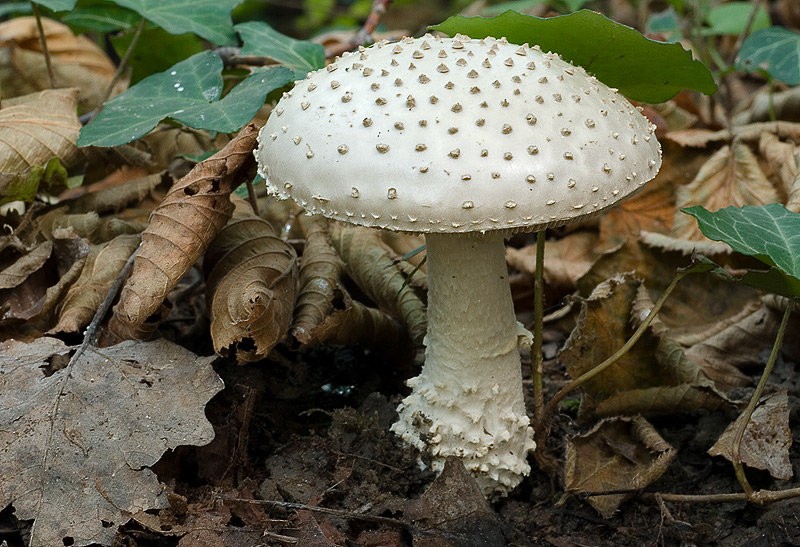Amanita echinocephala (Amanita echinocephala)
- Phân bộ: Basidiomycota (Basidiomycetes)
- Phân ngành: Agaricomycotina (Agaricomycetes)
- Lớp: Cơ quan sinh dục (Agaricomycetes)
- Phân lớp: Agaricomycetidae (Agaricomycetes)
- Đặt hàng: Agaricales (Agaric hoặc Lamellar)
- Họ: Họ Dâu tằm (Amanitaceae)
- Chi: Amanita (Amanita)
- Kiểu: Amanita echinocephala (bristle mushroom)
- Fat man bristly
- Amanita prickly

The bristly fly agaric (Amanita echinocephala) is a mushroom belonging to the genus Amanita. In literary sources, the interpretation of the species is ambiguous. So, a scientist named K. Bass talks about the bristly fly agaric as a synonym for A. Solitaria. The same interpretation is repeated after him by two more scientists: R. Tulloss and S. Wasser. According to studies conducted by Species Fungorum, the bristly fly agaric should be attributed to a separate species.
The fruit body of the bristly fly agaric consists of an initially almost round cap (which later turns into an open one) and a leg, which is slightly thickened in its middle, and has a cylindrical shape at the top, near the cap.
The height of the mushroom stem is 10-15 (and in some cases even 20) cm, the diameter of the stem varies between 1-4 cm. The base buried in the soil has a pointed shape. The surface of the leg has a yellowish or white color, sometimes an olive tint. On its surface there are whitish scales that result from cracking of the cuticle.
Mushroom pulp of high density, characterized by white color, but at the base (near the stem) and under the skin, the pulp of mushrooms acquires a yellowish tint. Its smell is unpleasant, as well as the taste.
The cap diameter is 14-16 cm, and it is characterized by good fleshiness. The edge of the cap can be serrated or even, with remnants of a flaky veil visible on it. The upper skin on the cap can be white or grayish in color, gradually it becomes light ocher, sometimes it acquires a greenish tint. The cap is covered with pyramidal warts with bristles.
The hymenophore consists of plates characterized by a large width, frequent but free arrangement. Initially, the plates are white, then they become light turquoise, and in mature mushrooms, the plates are characterized by a greenish-yellow tint.
The bristly fly agaric is common in deciduous and mixed forests, where oaks also grow. It is rare to find this type of mushroom. It prefers to grow in coastal areas near lakes or rivers, they feel good in calcareous soils. The bristly fly agaric has become more widespread in Europe (mainly in its southern regions). There are known cases of detection of this type of fungus in the British Isles, Scandinavia, Germany and our country. On the territory of Asia, the described mushroom species can grow in Israel, Western Siberia and Azerbaijan (Transcaucasia). The bristly fly agaric actively bears fruit from June to October.
The bristly fly agaric (Amanita echinocephala) belongs to the category of inedible mushrooms.
There are several similar species with bristly fly agaric. It:
- Amanita solitaria (lat. Amanita solitaria);
- Amanita pineal (lat. Amanita strobiliformis). Distinctive features of this type of mushrooms are white plates, pleasant aroma. Interestingly, some mycologists consider this mushroom edible, although most still insist on its toxicity.
Fly agarics should always be handled with extreme caution!









